SNVS465G October 2006 – September 2015 LM3404 , LM3404HV
PRODUCTION DATA.
- 1 Features
- 2 Applications
- 3 Description
- 4 Revision History
- 5 Pin Configuration and Functions
- 6 Specifications
- 7 Detailed Description
-
8 Application and Implementation
- 8.1 Application Information
- 8.2 Typical Applications
- 9 Power Supply Recommendations
- 10Layout
- 11Device and Documentation Support
- 12Mechanical, Packaging, and Orderable Information
封装选项
机械数据 (封装 | 引脚)
散热焊盘机械数据 (封装 | 引脚)
- DDA|8
订购信息
6 Specifications
6.1 Absolute Maximum Ratings
over operating free-air temperature range (unless otherwise noted)(1)(2)| MIN | MAX | UNIT | ||
|---|---|---|---|---|
| VIN to GND | LM3404 | –0.3 | 45 | V |
| LM3404HV | –0.3 | 76 | ||
| BOOT to GND | LM3404 | –0.3 | 59 | V |
| LM3404HV | –0.3 | 90 | ||
| SW to GND | LM3404 | –1.5 | 45 | V |
| LM3404HV | –1.5 | 76 | ||
| BOOT to VCC | LM3404 | –0.3 | 45 | V |
| LM3404HV | –0.3 | 76 | ||
| BOOT to SW | –0.3 | 14 | V | |
| VCC to GND | –0.3 | 14 | V | |
| DIM to GND | –0.3 | 7 | V | |
| CS to GND | –0.3 | 7 | V | |
| RON to GND | –0.3 | 7 | V | |
| Soldering information | Lead temperature (soldering, 10 s) | 260 | °C | |
| Infrared or convection reflow (15 s) | 235 | |||
| Junction temperature | 150 | °C | ||
| Storage temperature | –65 | 125 | °C | |
(1) Stresses beyond those listed under Absolute Maximum Ratings may cause permanent damage to the device. These are stress ratings only, which do not imply functional operation of the device at these or any other conditions beyond those indicated under Recommended Operating Conditions. Exposure to absolute-maximum-rated conditions for extended periods may affect device reliability.
(2) If Military or Aerospace specified devices are required, contact the Texas Instruments Semiconductor Sales Office or Distributors for availability and specifications.
6.2 ESD Ratings
| VALUE | UNIT | |||
|---|---|---|---|---|
| V(ESD) | Electrostatic discharge | Human-body model (HBM), per ANSI/ESDA/JEDEC JS-001(1)(3) | ±2000 | V |
| Charged-device model (CDM), per JEDEC specification JESD22-C101(2) | ±1000 | |||
(1) JEDEC document JEP155 states that 500-V HBM allows safe manufacturing with a standard ESD control process.
(2) JEDEC document JEP157 states that 250-V CDM allows safe manufacturing with a standard ESD control process.
(3) The human body model is a 100-pF capacitor discharged through a 1.5-kΩ resistor into each pin.
6.3 Recommended Operating Conditions
over operating free-air temperature range (unless otherwise noted)(1)| MIN | NOM | MAX | UNIT | ||
|---|---|---|---|---|---|
| VIN | LM3404 | 6 | 42 | V | |
| LM3404HV | 6 | 75 | |||
| Junction Temperature Range | LM3404 | –40 | 125 | °C | |
| LM34040HV | –40 | 125 | |||
(1) Absolute Maximum Ratings indicate limits beyond which damage to the device may occur. Recommended Operating Conditions indicate conditions for which the device is intended to be functional, but specific performance is not ensured. For specifications and the test conditions, see Electrical Characteristics.
6.4 Thermal Information
| THERMAL METRIC(1) | LM3404, LM3404HV | UNIT | ||
|---|---|---|---|---|
| SOIC | SO PowerPAD | |||
| 8 PINS | 8 PINS | |||
| RθJA | Junction-to-ambient thermal resistance | 106.8 | 44.7 | °C/W |
| RθJC(top) | Junction-to-case (top) thermal resistance | 46.2 | 51.2 | °C/W |
| RθJB | Junction-to-board thermal resistance | 48.7 | 24.5 | °C/W |
| ψJT | Junction-to-top characterization parameter | 6.7 | 6.8 | °C/W |
| ψJB | Junction-to-board characterization parameter | 48 | 24.4 | °C/W |
| RθJC(bot) | Junction-to-case (bottom) thermal resistance | N/A | 2.6 | °C/W |
(1) For more information about traditional and new thermal metrics, see the Semiconductor and IC Package Thermal Metrics application report, SPRA953.
6.5 Electrical Characteristics
VIN = 24 V (unless otherwise noted).–40°C ≤ TJ ≤ 125°C. (2)
| PARAMETER | CONDITIONS | MIN | TYP | MAX | UNIT | |
|---|---|---|---|---|---|---|
| REGULATION AND OVERVOLTAGE COMPARATORS | ||||||
| VREF-REG | CS Regulation Threshold | CS Decreasing, SW turns on | 194 | 200 | 206 | mV |
| VREF-0V | CS Overvoltage Threshold | CS Increasing, SW turns off | 300 | mV | ||
| ICS | CS Bias Current | CS = 0 V | 0.1 | µA | ||
| SHUTDOWN | ||||||
| VSD-TH | Shutdown Threshold | RON / SD Increasing | 0.3 | 0.7 | 1.05 | V |
| VSD-HYS | Shutdown Hysteresis | RON / SD Decreasing | 40 | mV | ||
| INTERNAL REGULATOR | ||||||
| VCC-REG | VCC Regulated Output | 6.4 | 7 | 7.4 | V | |
| VIN-DO | VIN – VCC | ICC = 5 mA, 6 V < VIN < 8 V | 300 | mV | ||
| VCC-BP-TH | VCC Bypass Threshold | VIN Increasing | 8.8 | V | ||
| VCC-BP-HYS | VCC Bypass Hysteresis | VIN Decreasing | 230 | mV | ||
| VCC-Z-6 | VCC Output Impedance (0 mA < ICC < 5 mA) |
VIN = 6 V | 55 | Ω | ||
| VCC-Z-8 | VIN = 8 V | 50 | Ω | |||
| VCC-Z-24 | VIN = 24 V | 0.4 | Ω | |||
| VCC-LIM | VCC Current Limit (1) | VIN = 24 V, VCC = 0 V | 16 | mA | ||
| VCC-UV-TH | VCC Undervoltage Lock-out Threshold | VCC Increasing | 5.3 | V | ||
| VCC-UV-HYS | VCC Undervoltage Lock-out Hysteresis | VCC Decreasing | 150 | mV | ||
| VCC-UV-DLY | VCC Undervoltage Lock-out Filter Delay | 100-mV Overdrive | 3 | µs | ||
| IIN-OP | IIN Operating Current | Non-switching, CS = 0.5 V | 625 | 900 | µA | |
| IIN-SD | IIN Shutdown Current | RON / SD = 0 V | 95 | 180 | µA | |
| CURRENT LIMIT | ||||||
| ILIM | Current Limit Threshold | 1.2 | 1.5 | 1.8 | A | |
| DIM COMPARATOR | ||||||
| VIH | Logic High | DIM Increasing | 2.2 | V | ||
| VIL | Logic Low | DIM Decreasing | 0.8 | V | ||
| IDIM-PU | DIM Pullup Current | DIM = 1.5 V | 80 | µA | ||
| MOSFET AND DRIVER | ||||||
| RDS-ON | Buck Switch On Resistance | ISW = 200 mA, BST-SW = 6.3 V | 0.37 | 0.75 | Ω | |
| VDR-UVLO | BST Undervoltage Lock-out Threshold | BST–SW Increasing | 1.7 | 3 | 4 | V |
| VDR-HYS | BST Undervoltage Lock-out Hysteresis | BST–SW Decreasing | 400 | mV | ||
| THERMAL SHUTDOWN | ||||||
| TSD | Thermal Shutdown Threshold | 165 | °C | |||
| TSD-HYS | Thermal Shutdown Hysteresis | 25 | °C | |||
(1) VCC provides self bias for the internal gate drive and control circuits. Device thermal limitations limit external loading.
(2) Typical specifications represent the most likely parametric norm at 25°C operation.
6.6 Switching Characteristics
over operating free-air temperature range (unless otherwise noted)| PARAMETER | TEST CONDITIONS | MIN | TYP | MAX | UNIT | |
|---|---|---|---|---|---|---|
| SYSTEM PARAMETERS - LM3404 | ||||||
| tON-1 | On-time 1 | VIN = 10 V, RON = 200 kΩ | 2.1 | 2.75 | 3.4 | µs |
| tON-2 | On-time 2 | VIN = 40 V, RON = 200 kΩ | 515 | 675 | 835 | ns |
| SYSTEM PARAMETERS - LM3404HV | ||||||
| tON-1 | On-time 1 | VIN = 10 V, RON = 200 kΩ | 2.1 | 2.75 | 3.4 | µs |
| tON-2 | On-time 2 | VIN = 70 V, RON = 200 kΩ | 325 | 415 | 505 | ns |
| OFF TIMER | ||||||
| tOFF-MIN | Minimum Off-time | CS = 0 V | 270 | ns | ||
6.7 Typical Characteristics
spacer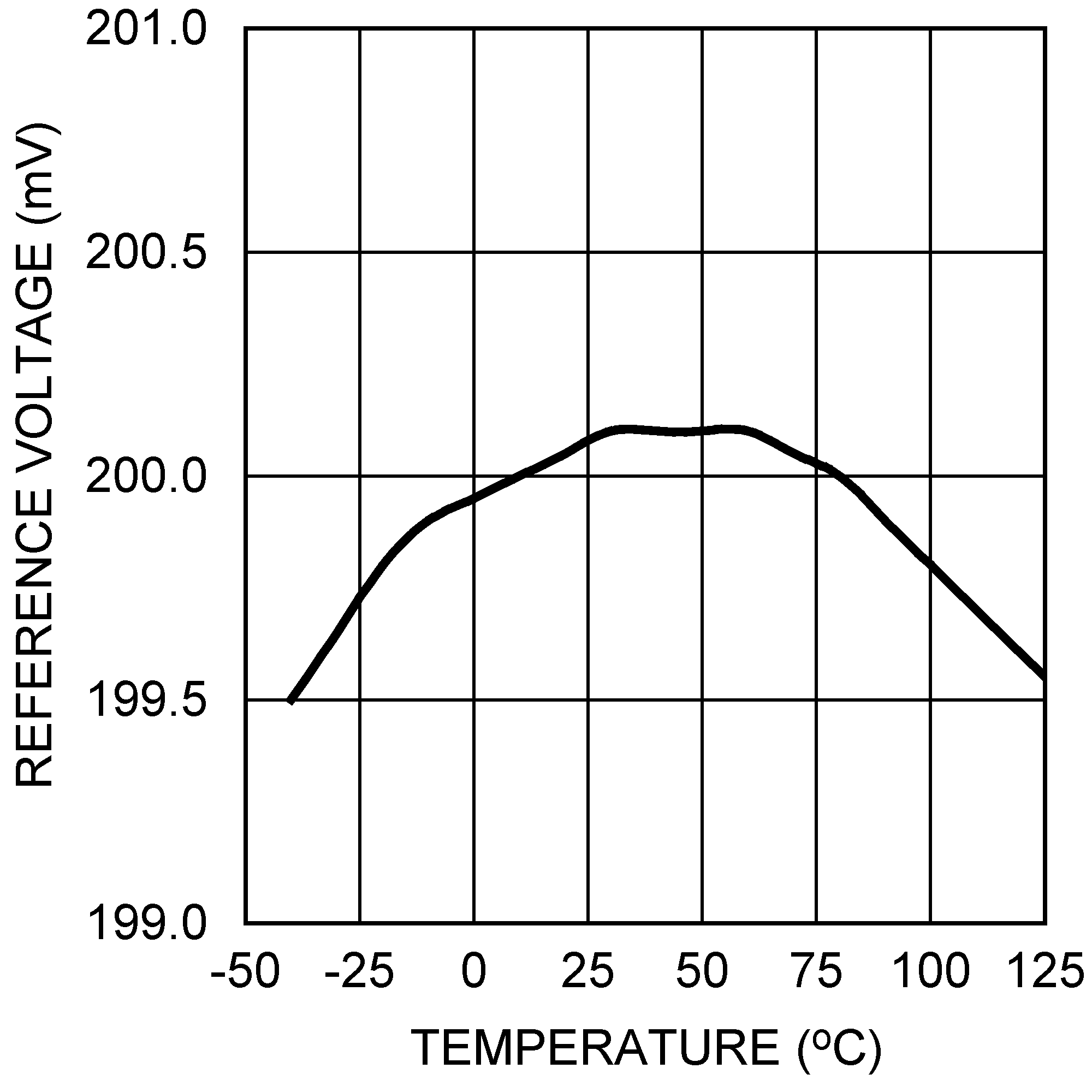
| VIN = 24 V |

| TA = 25°C |

| TA = 25°C |
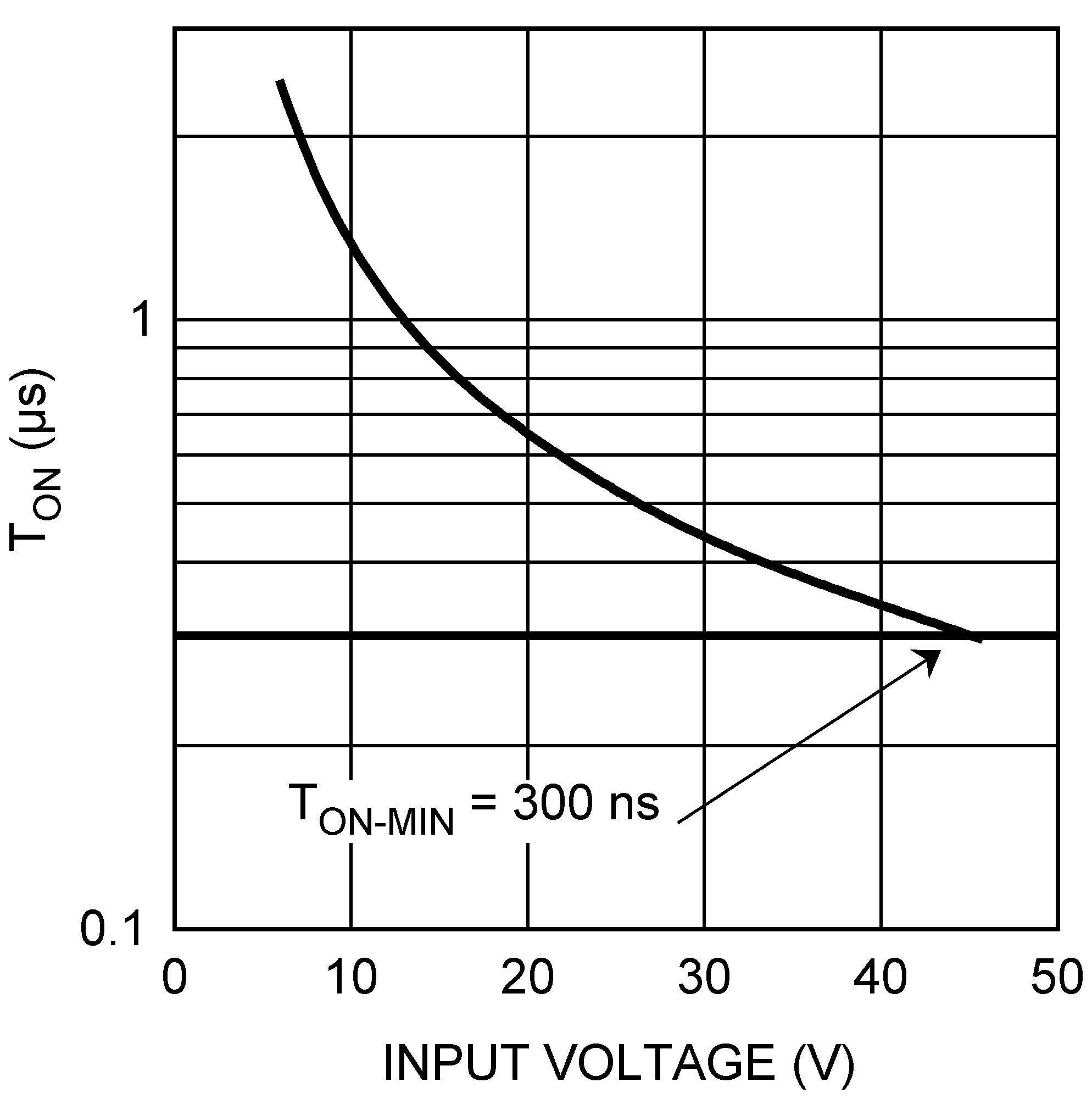
| TA = 25°C |
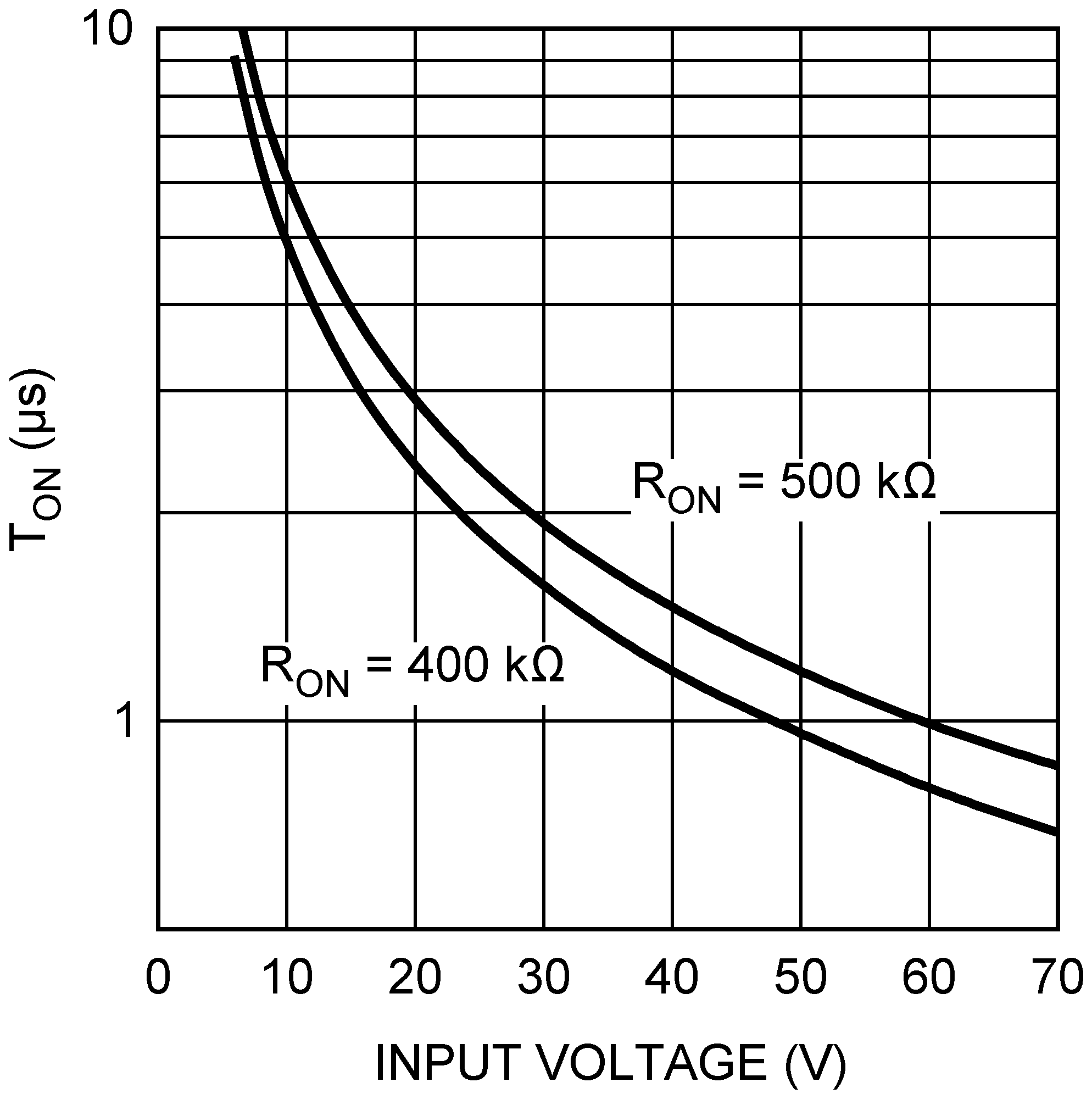
| TA = 25°C |
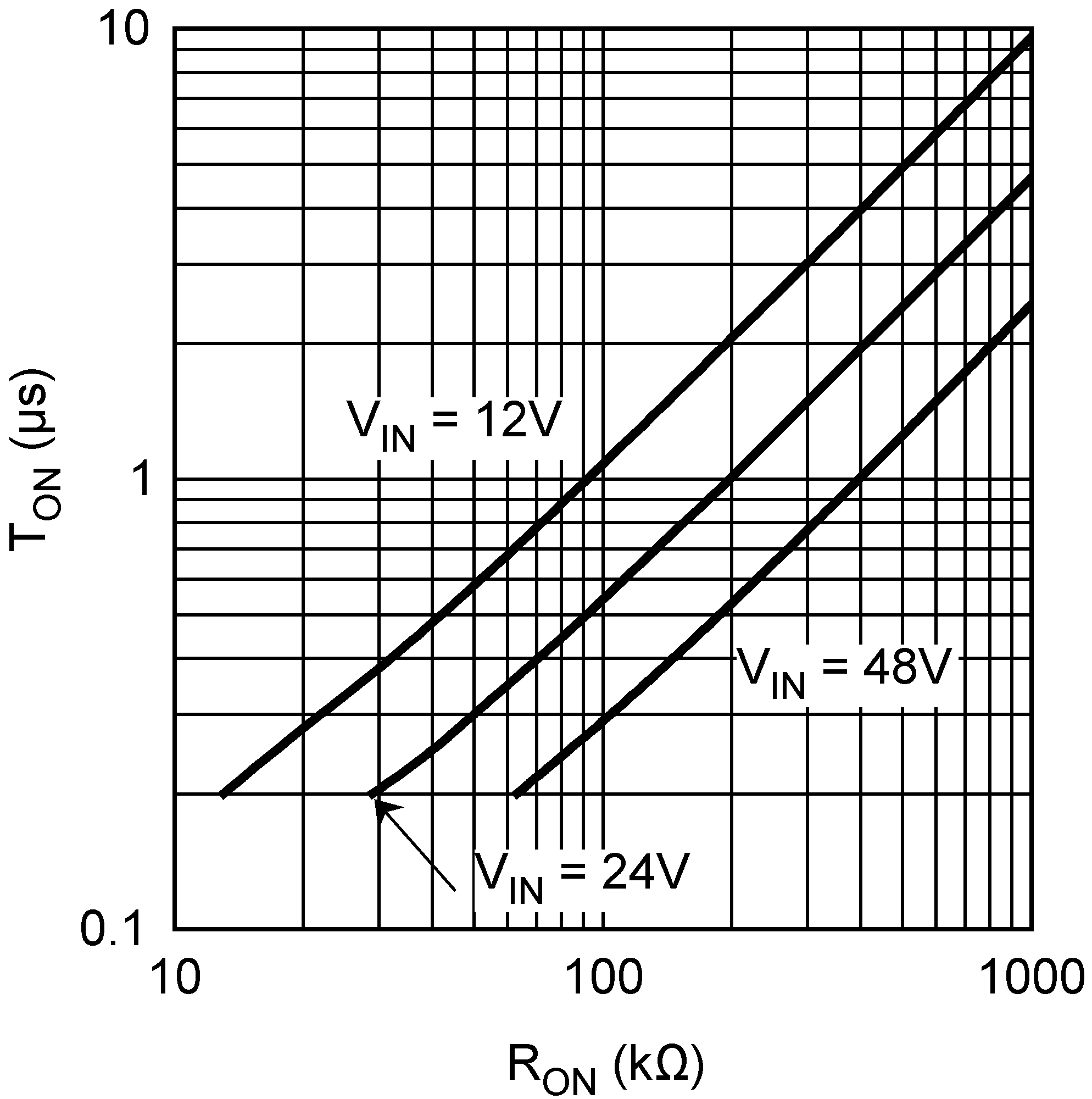
| TA = 25°C |
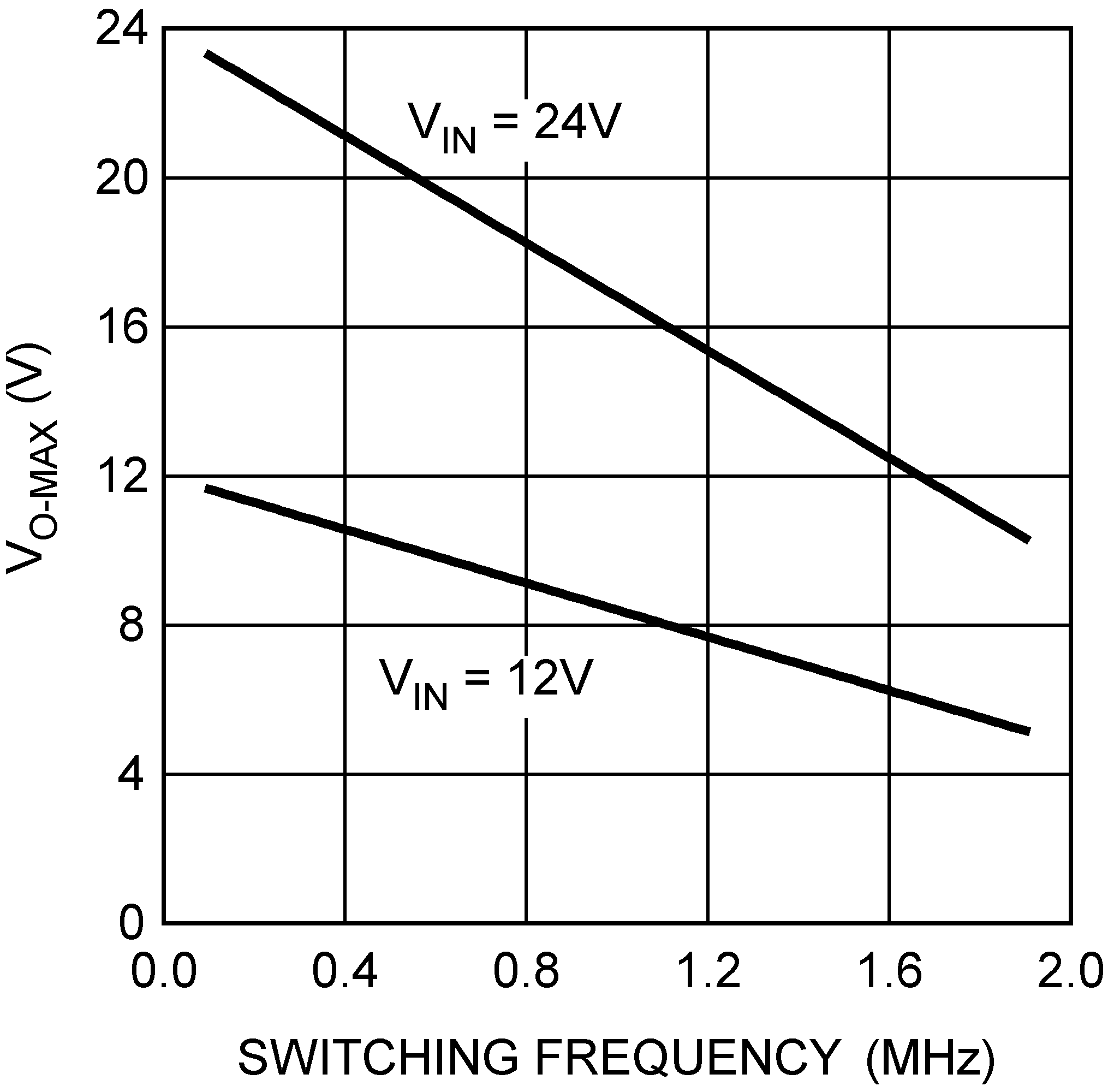
| TA = 25°C |

| TA = 25°C |

| TA = 25°C |

| VIN = 24 V |
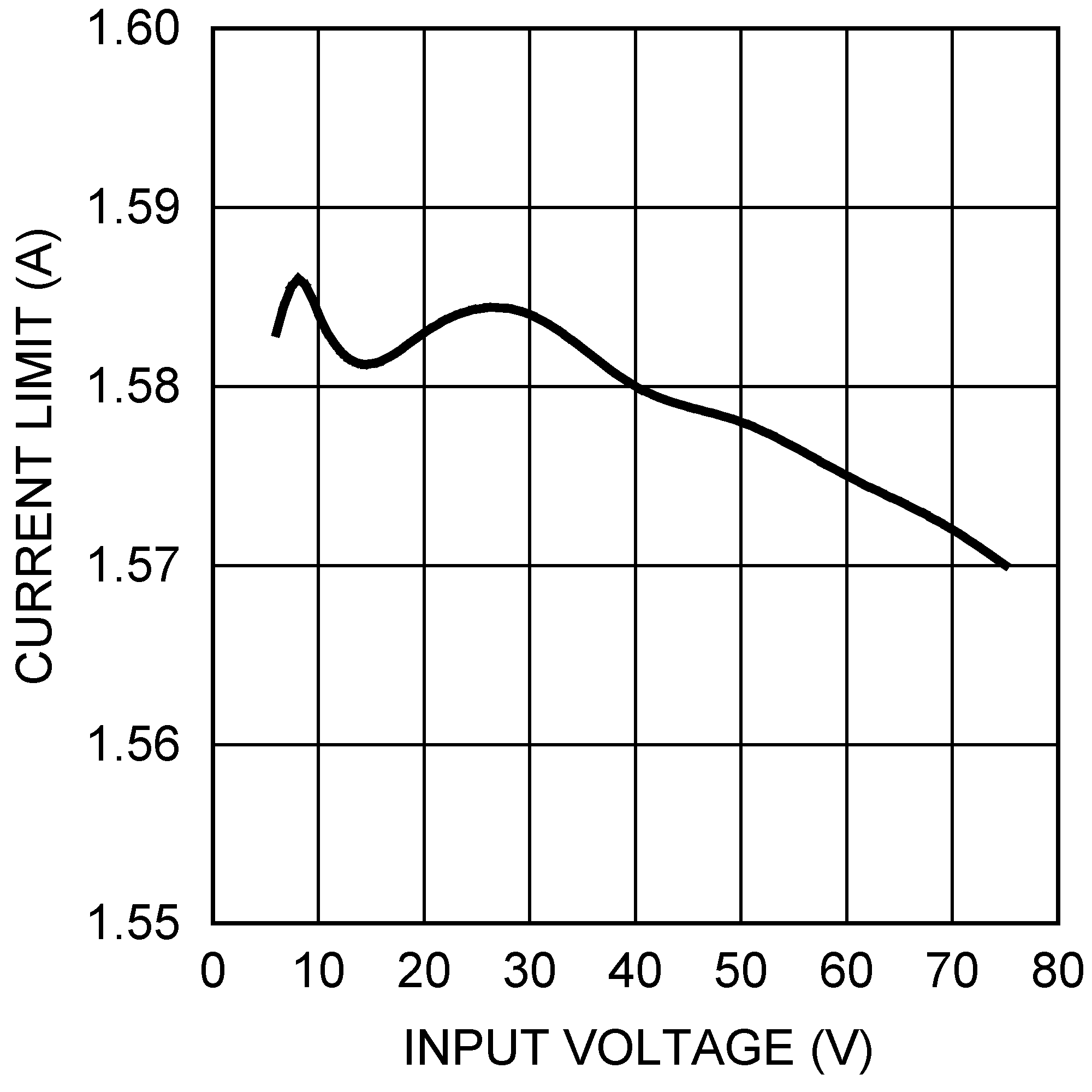
| TA = 25°C |
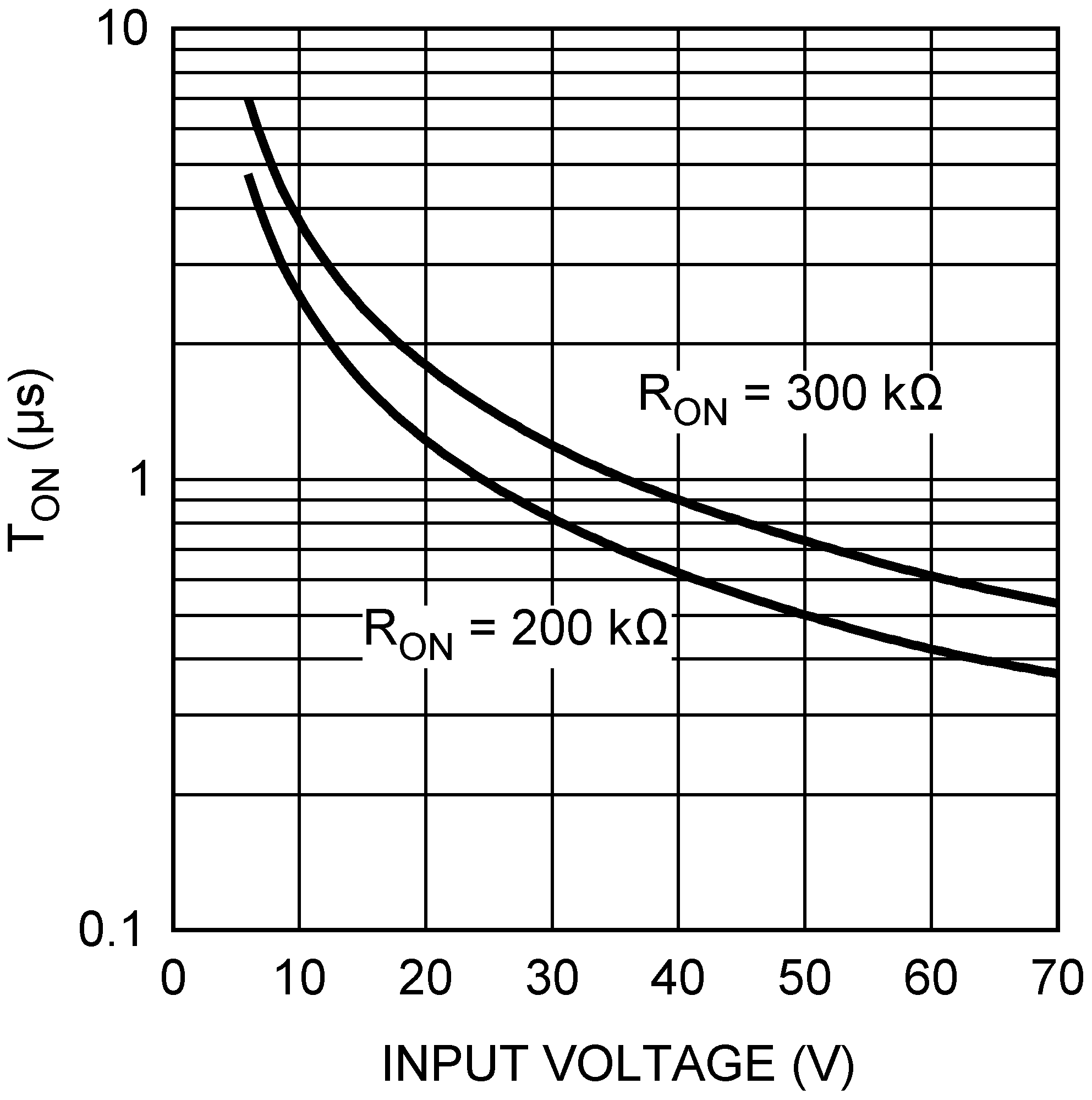
| TA = 25°C |

| TA = 25°C |
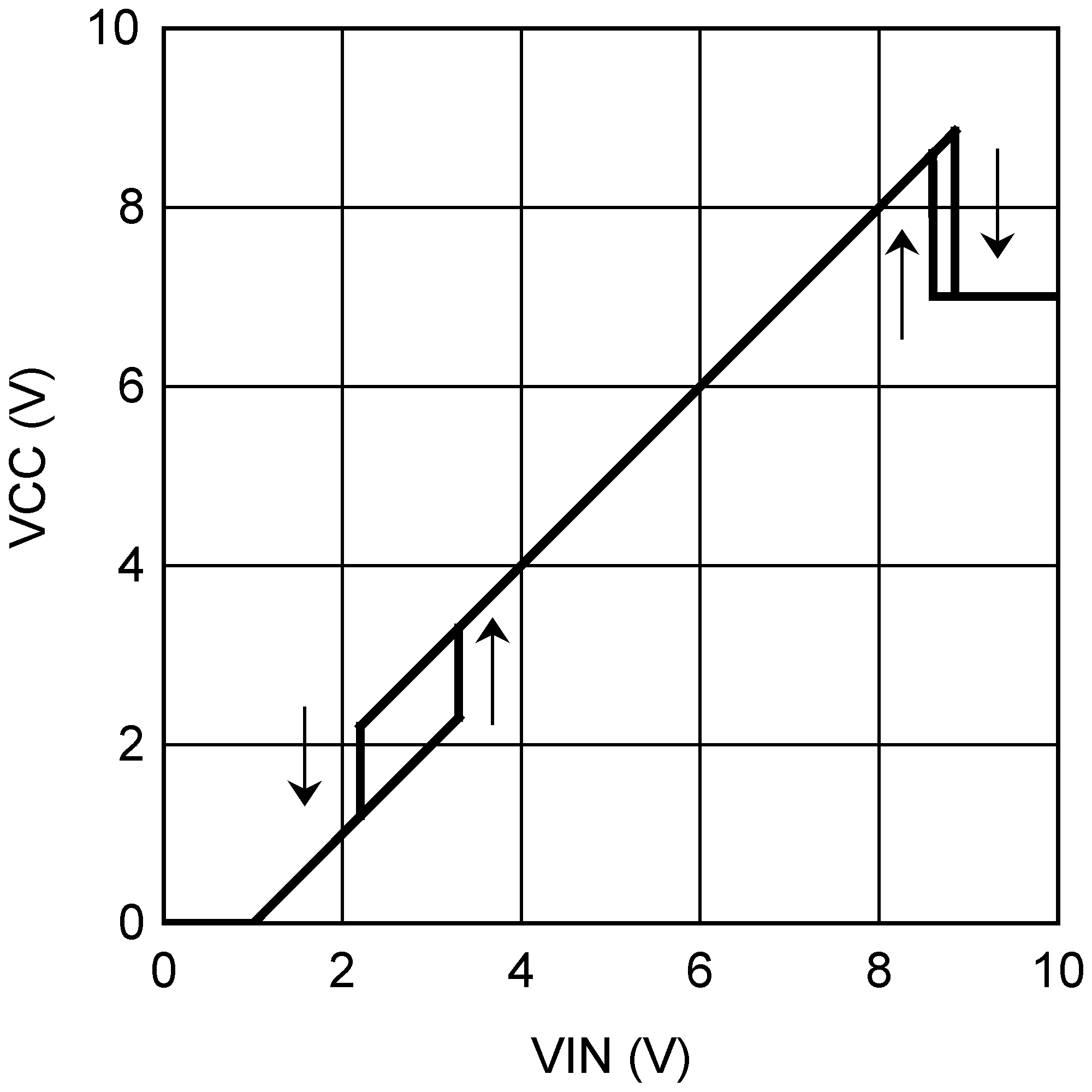
| TA = 25°C |

| TA = 25°C |

| TA = 25°C |